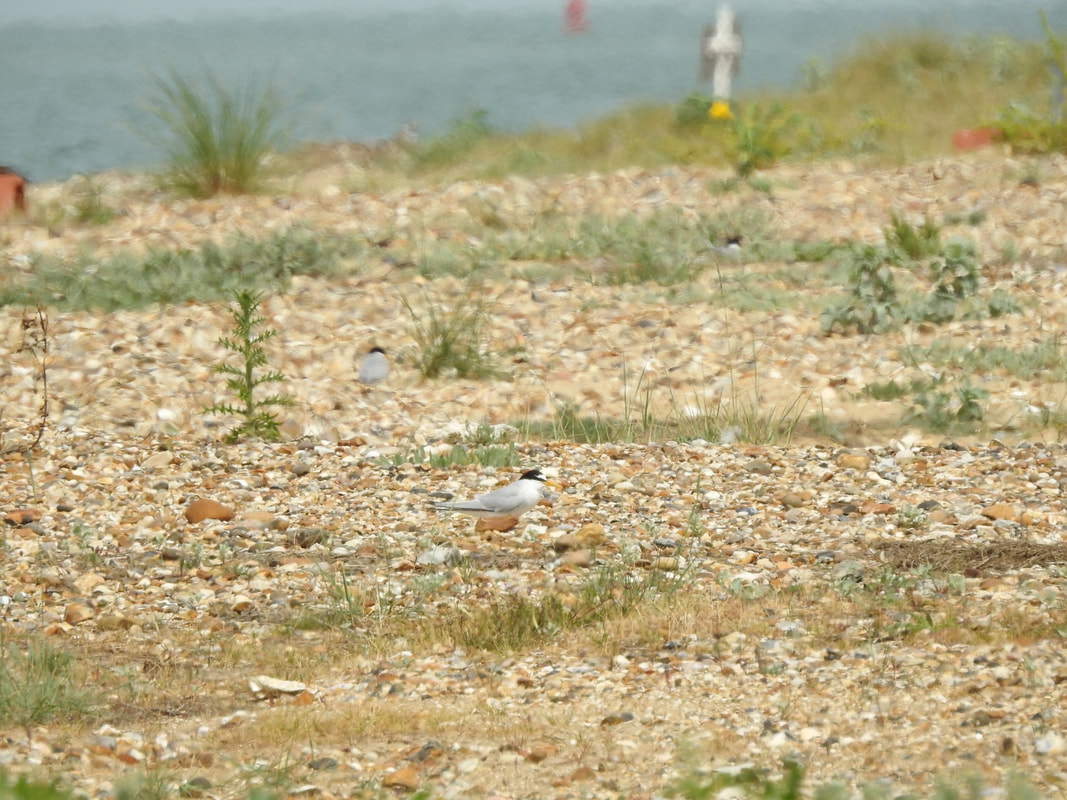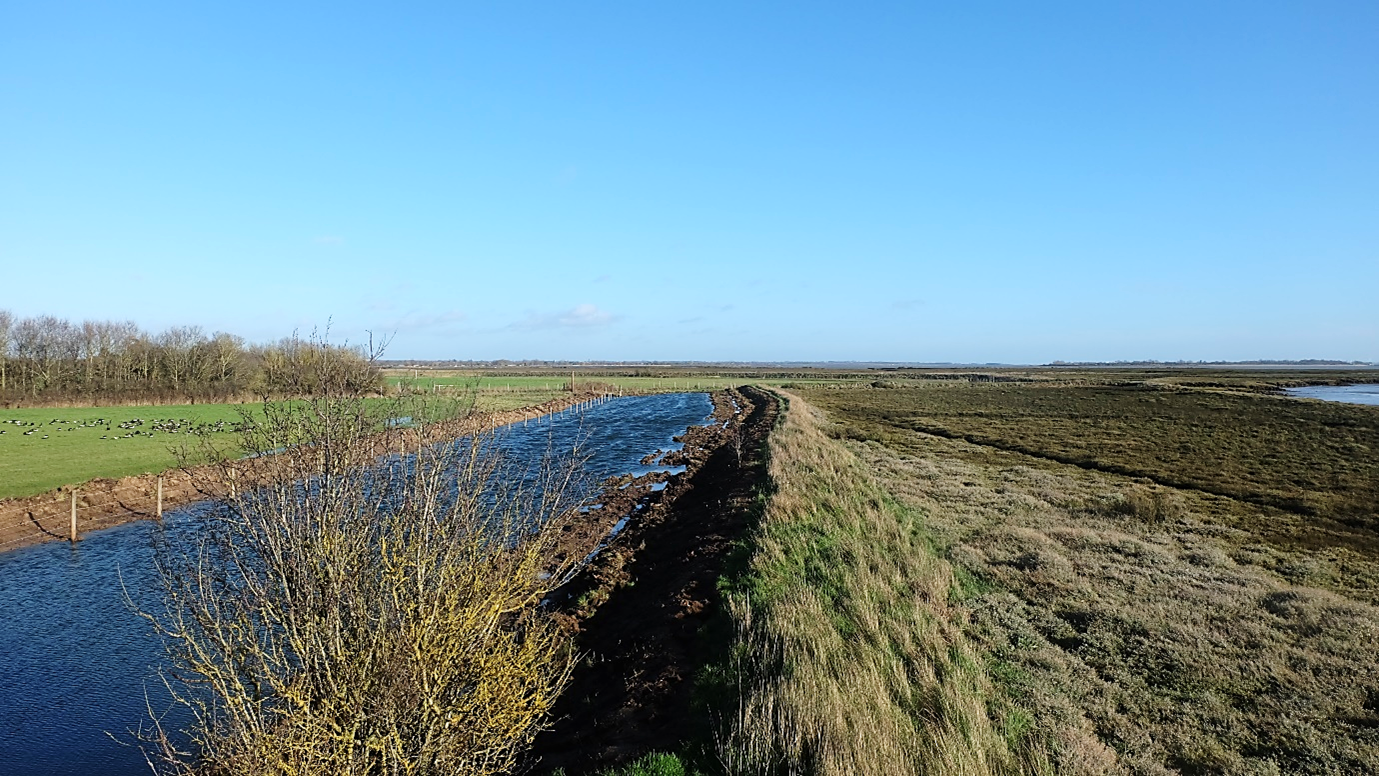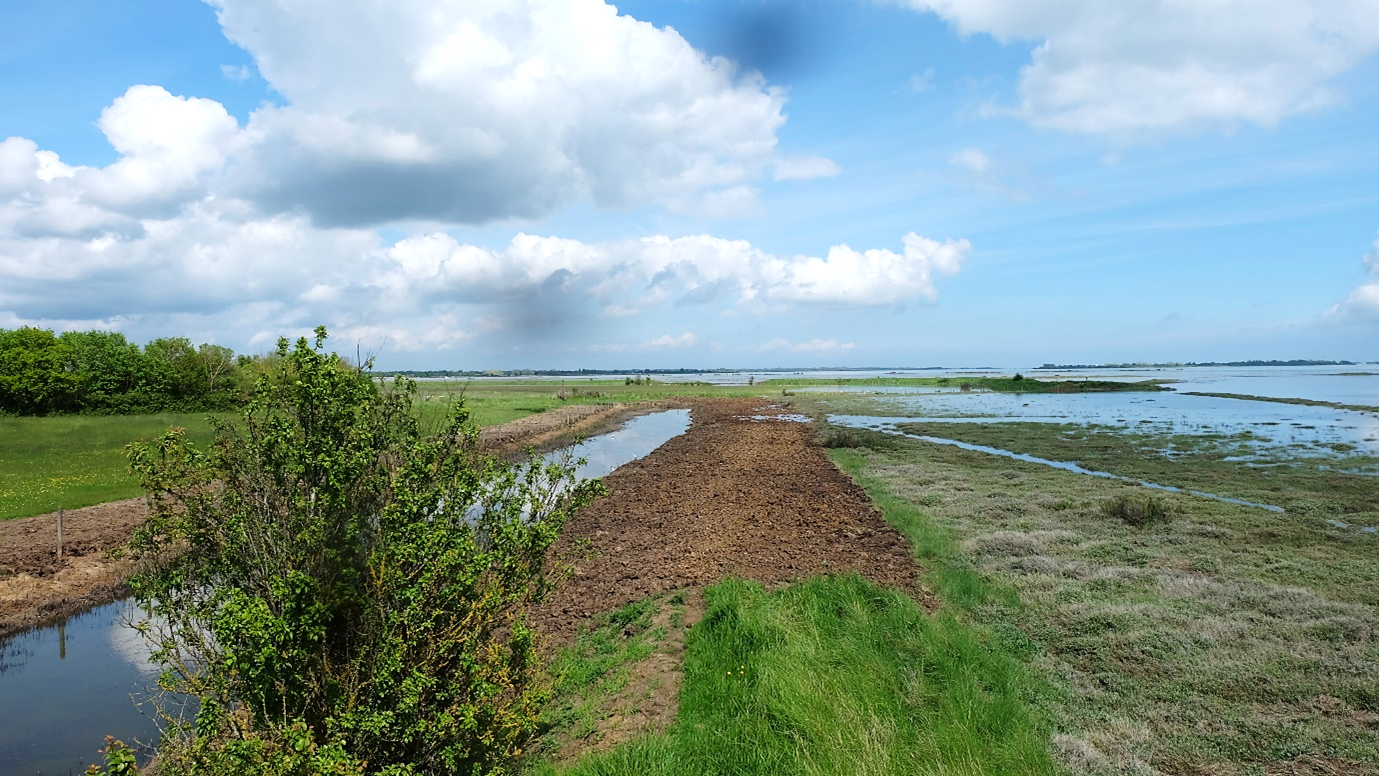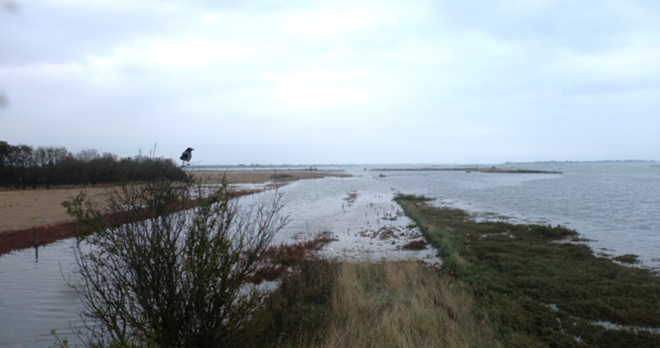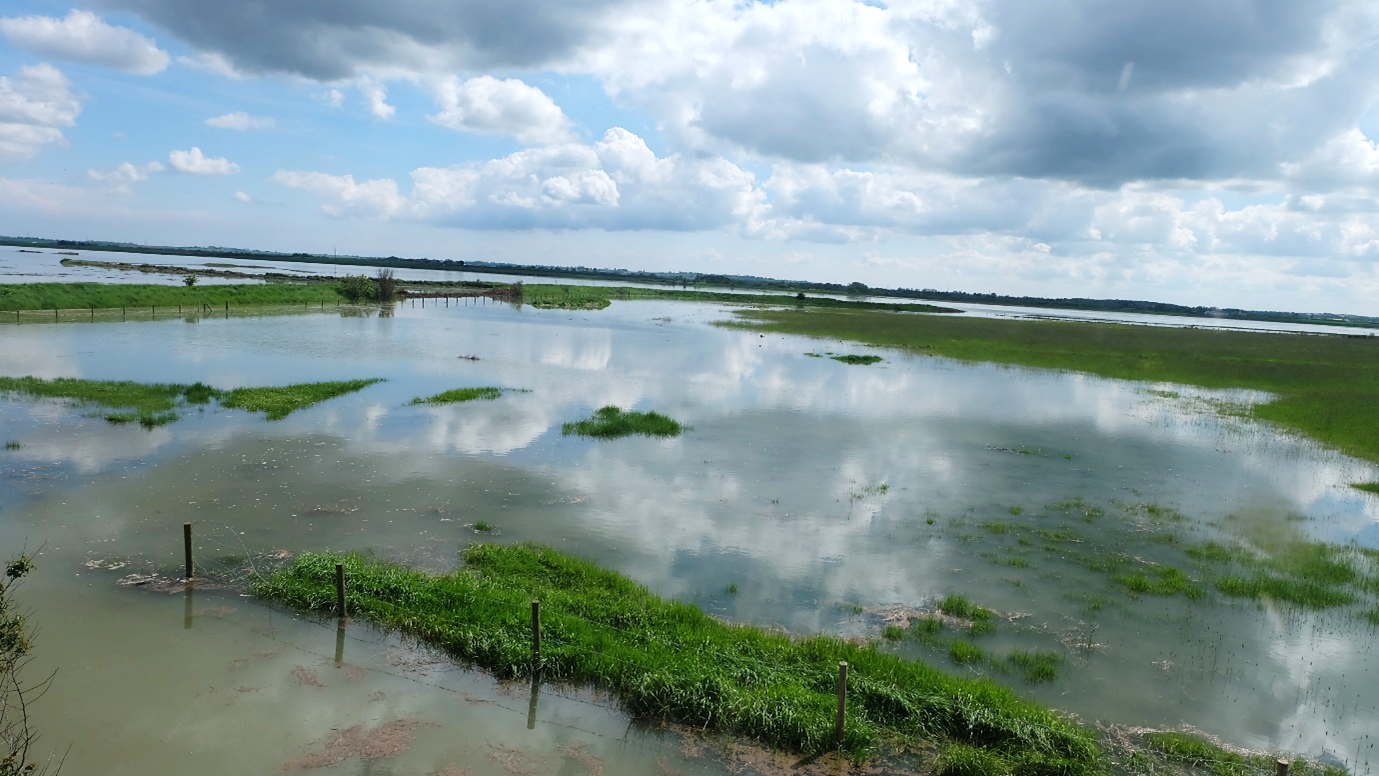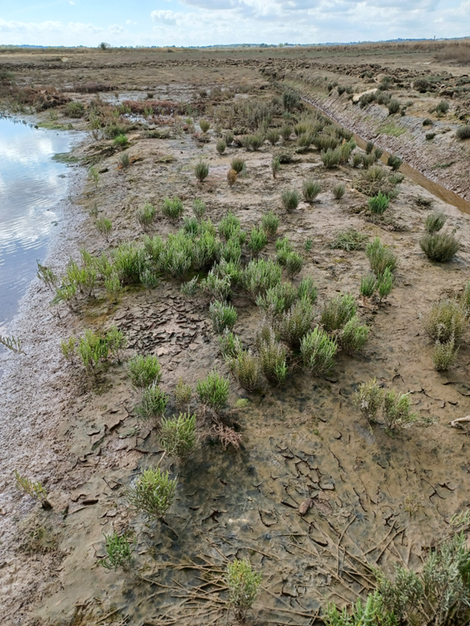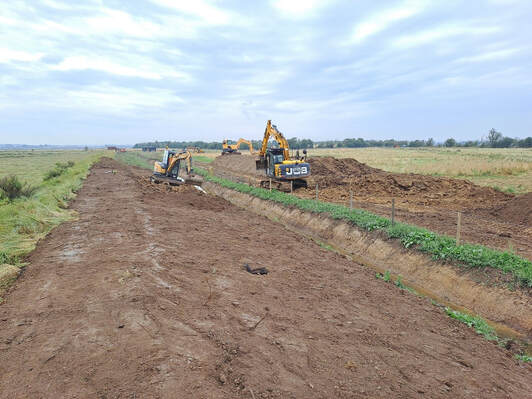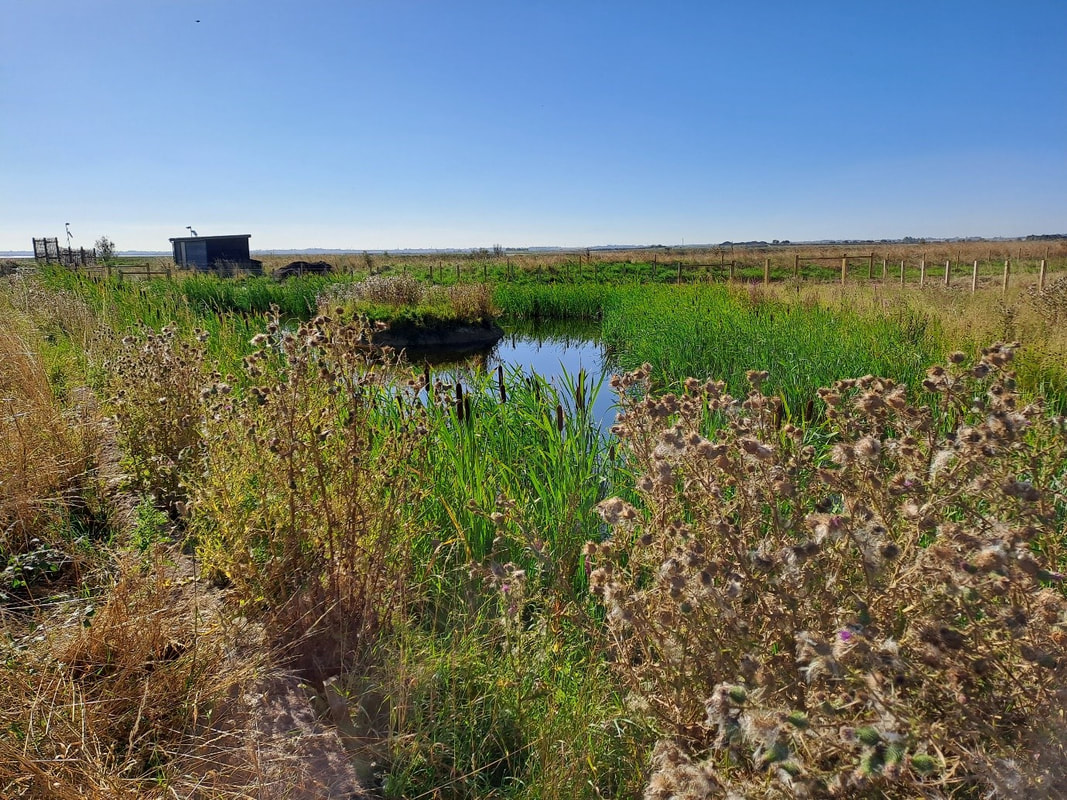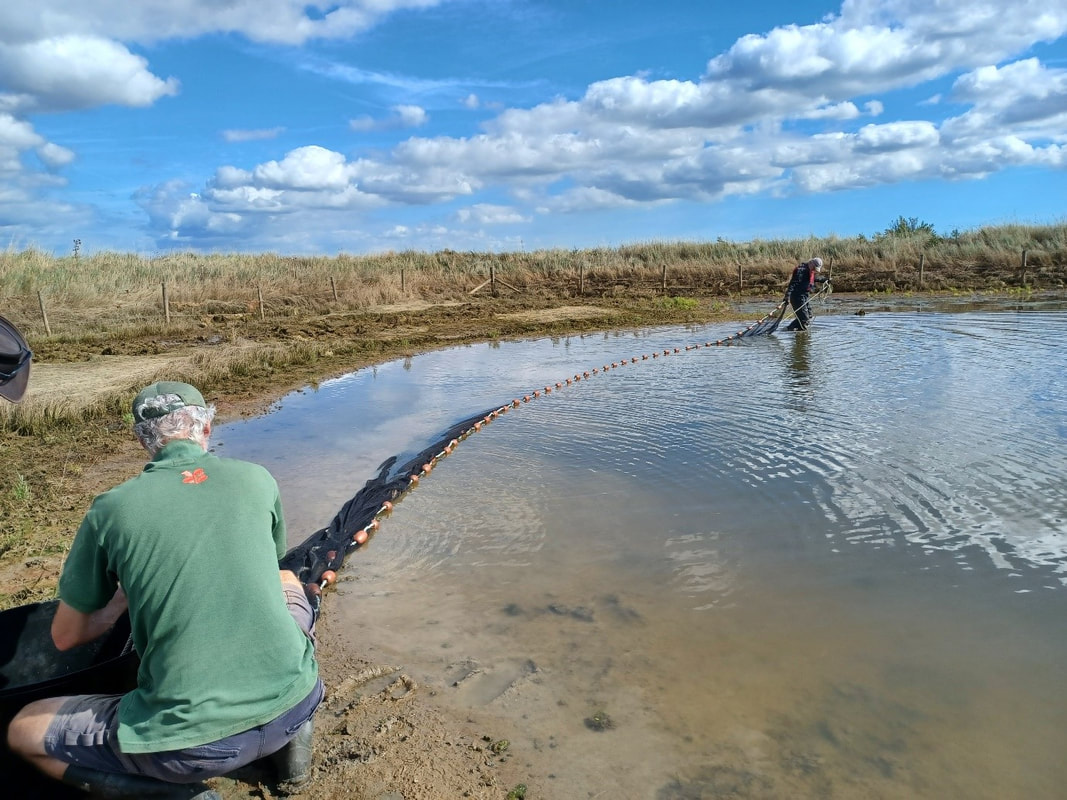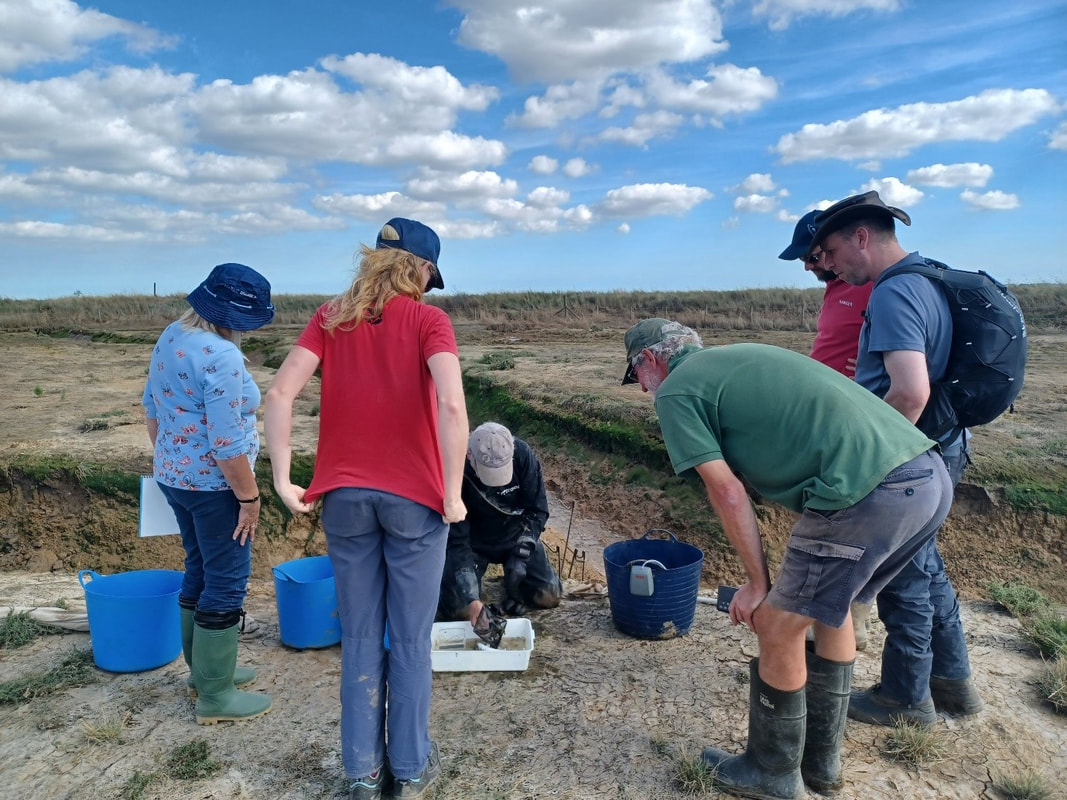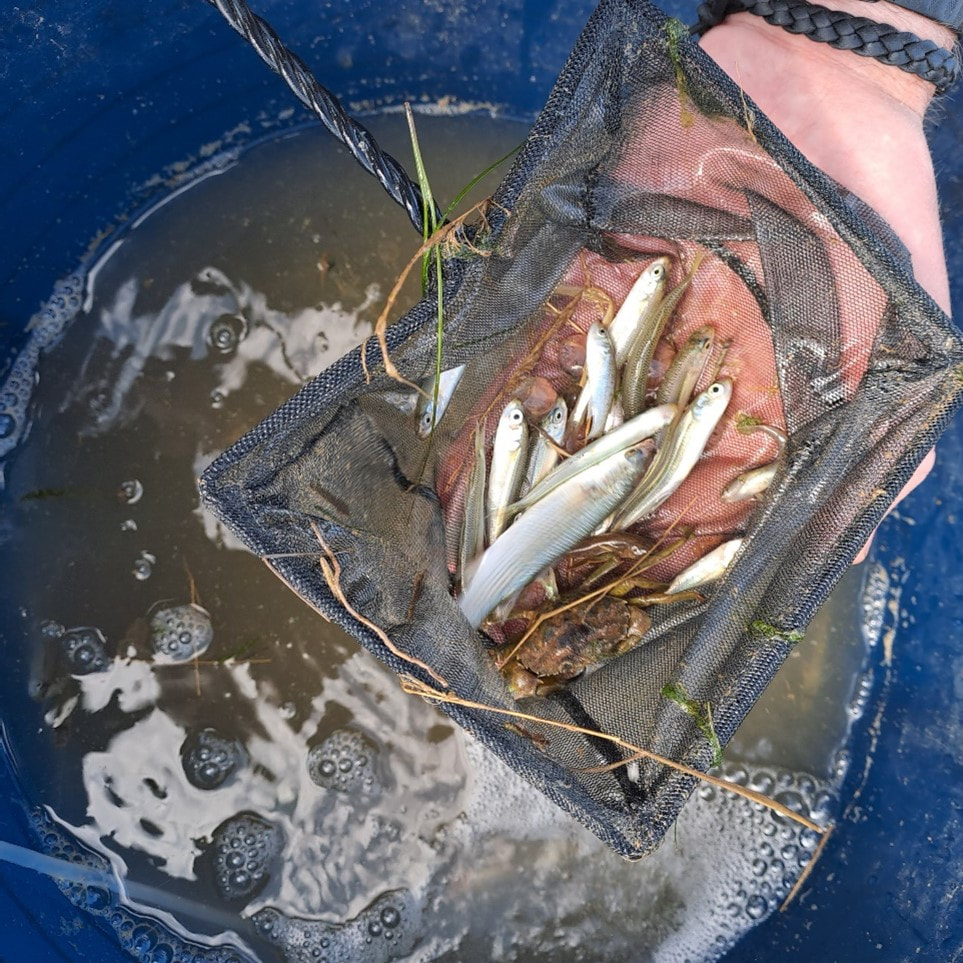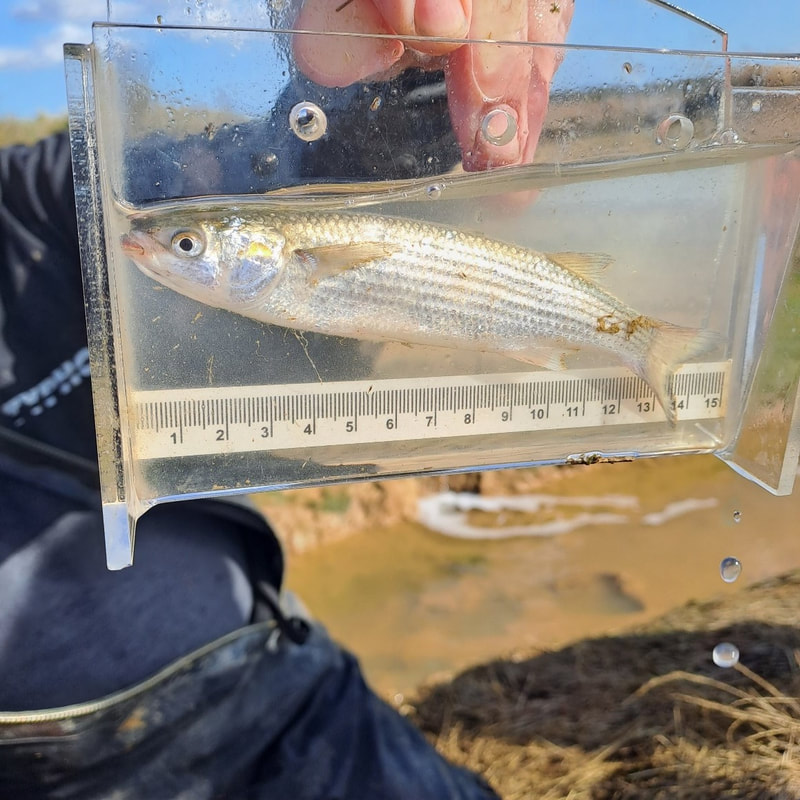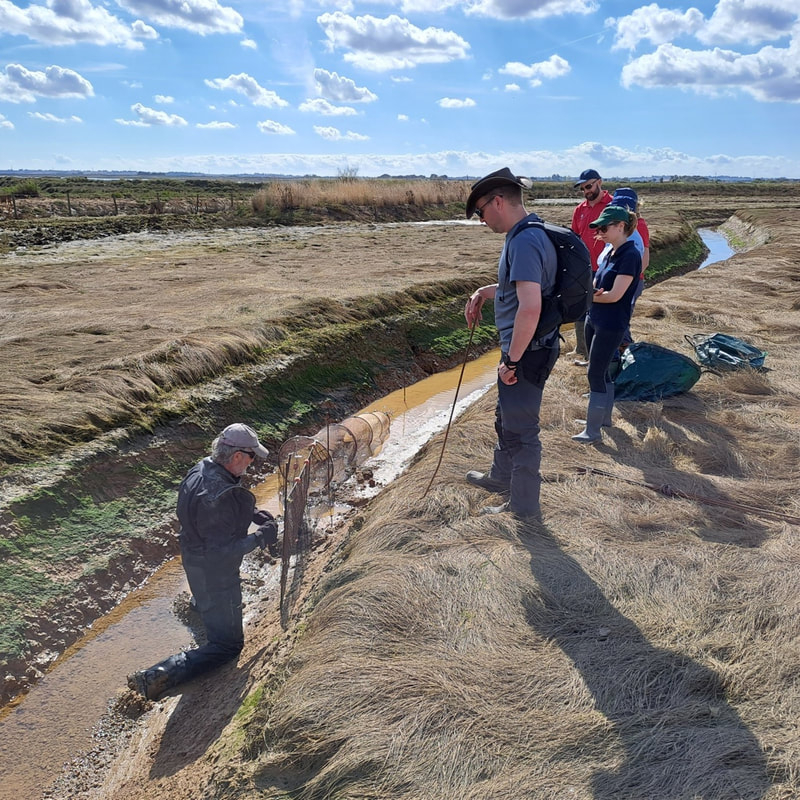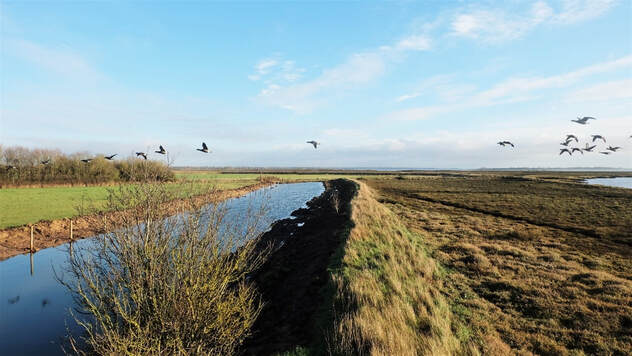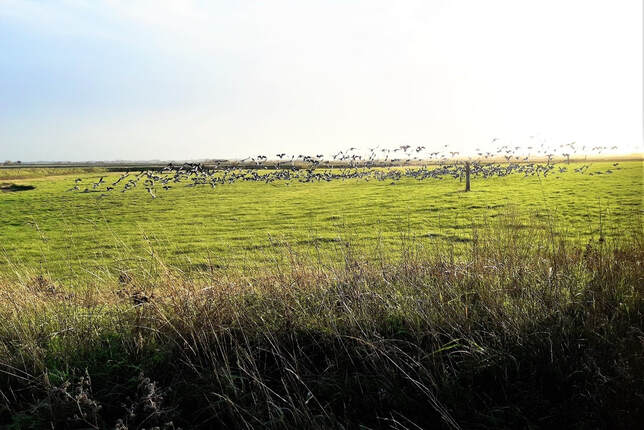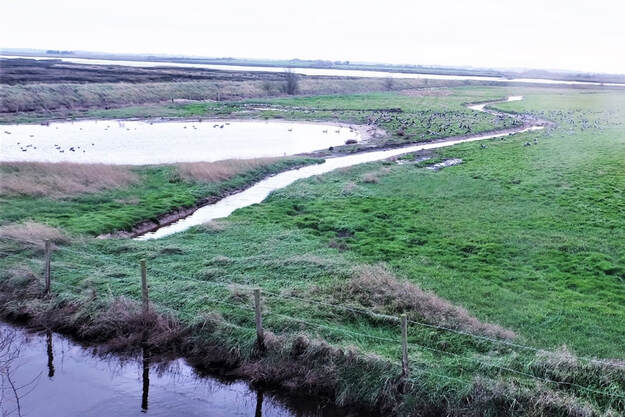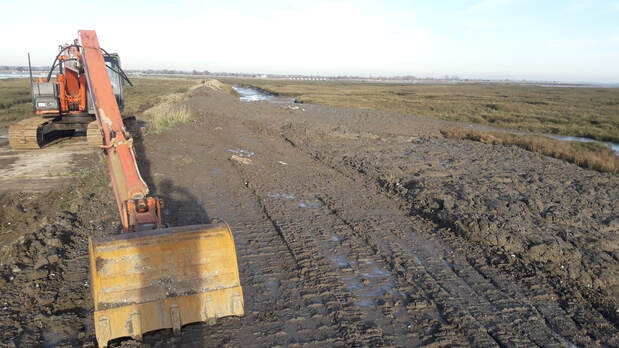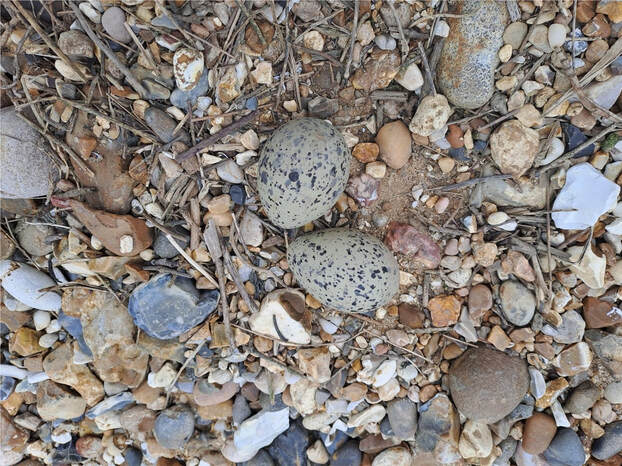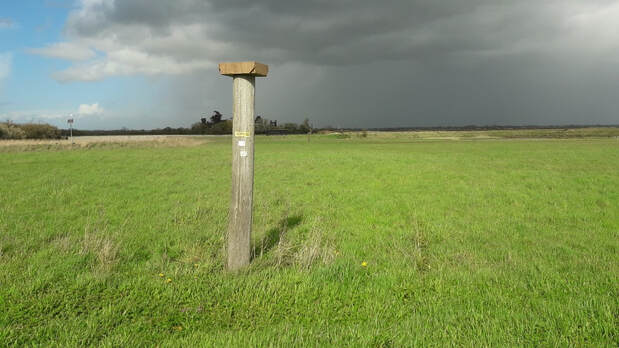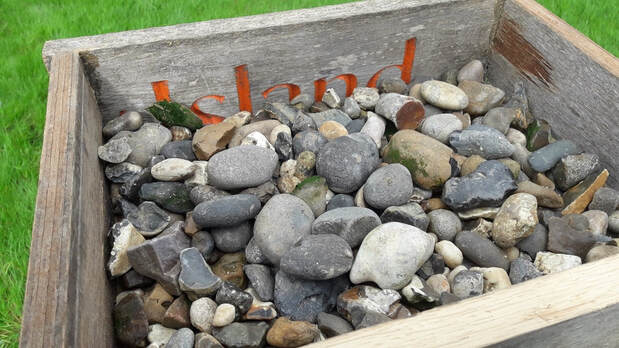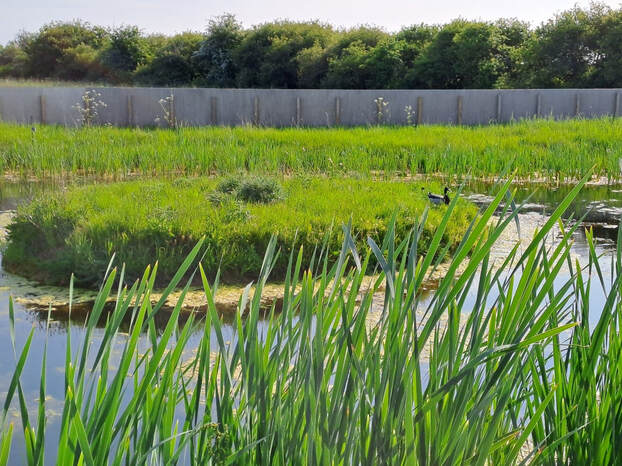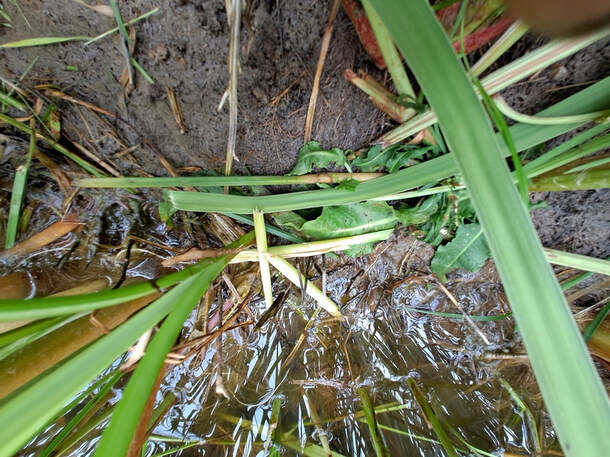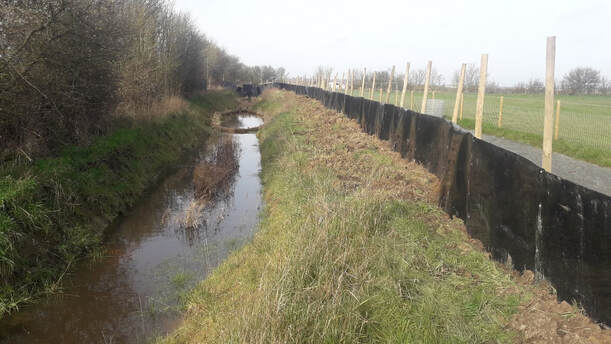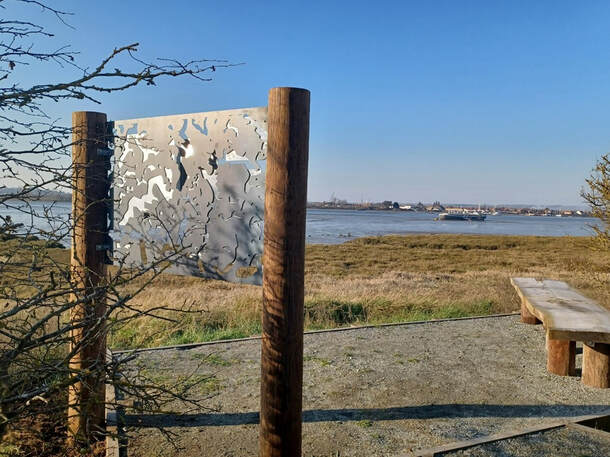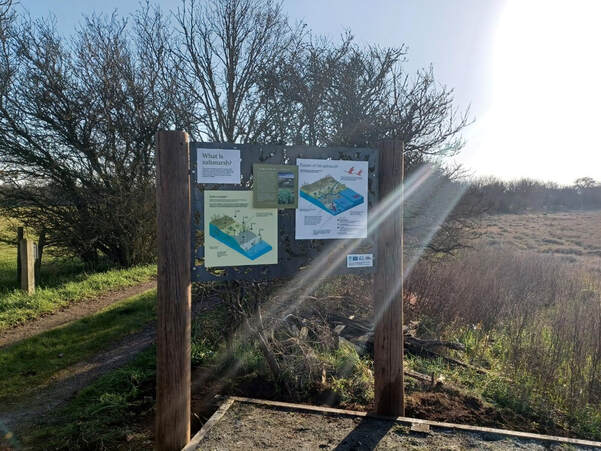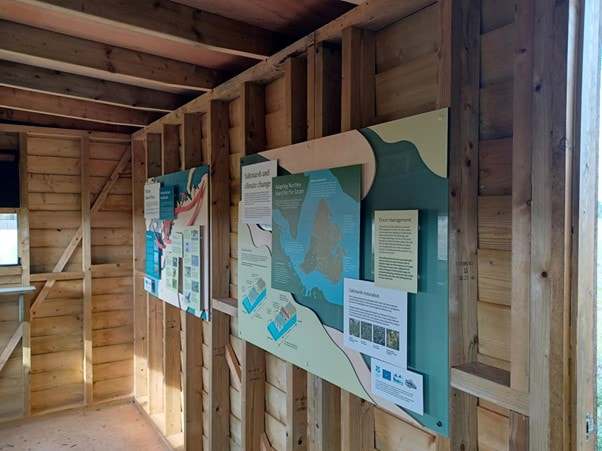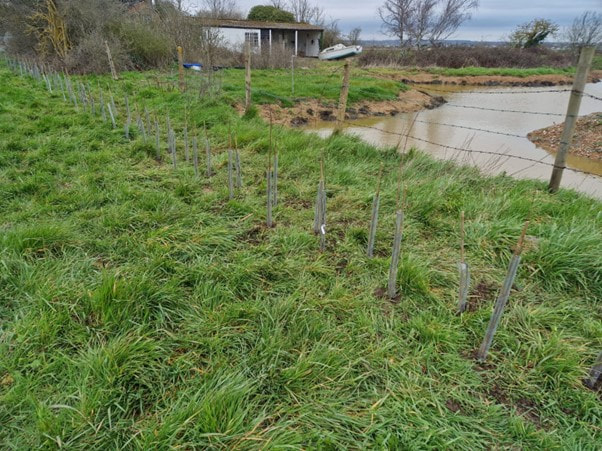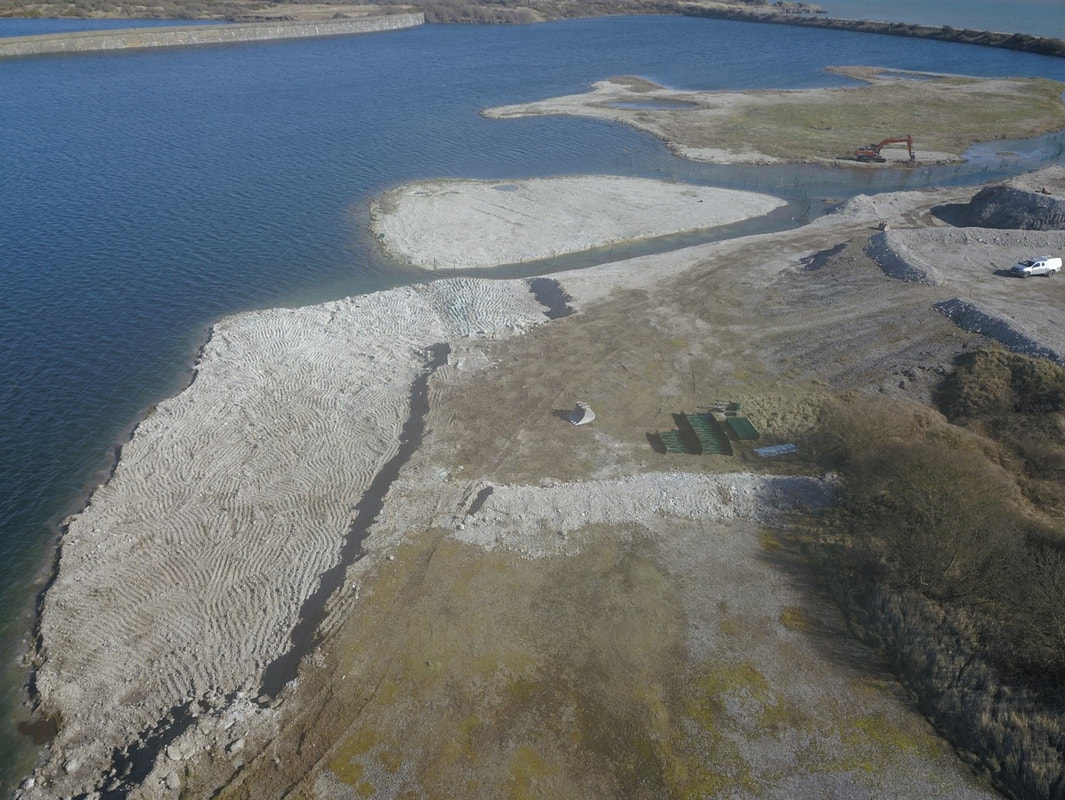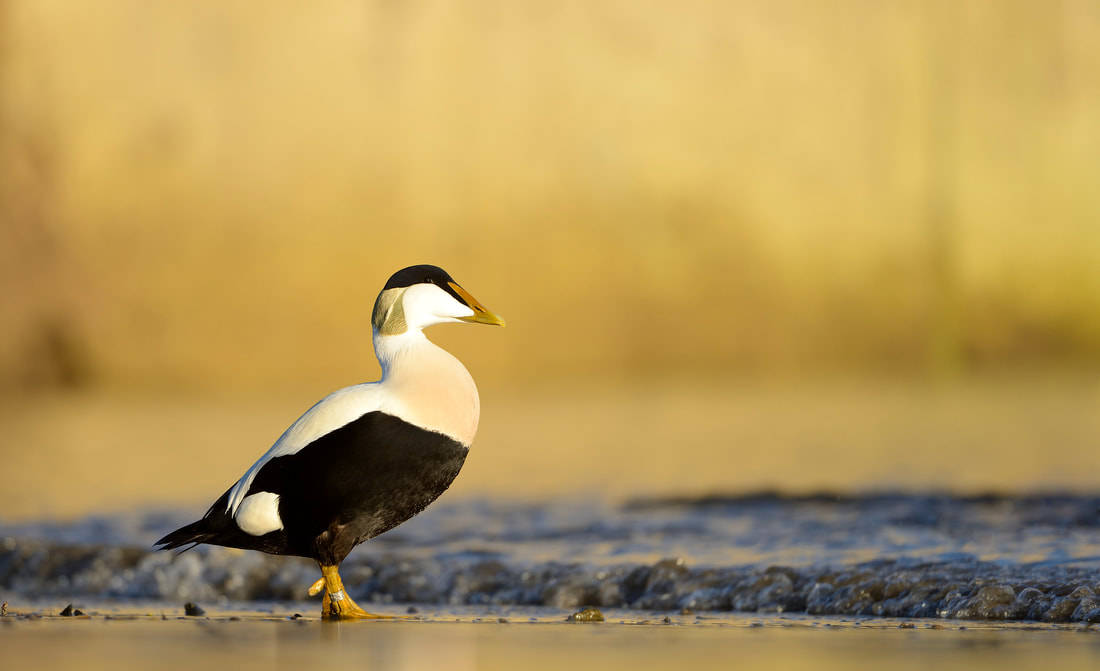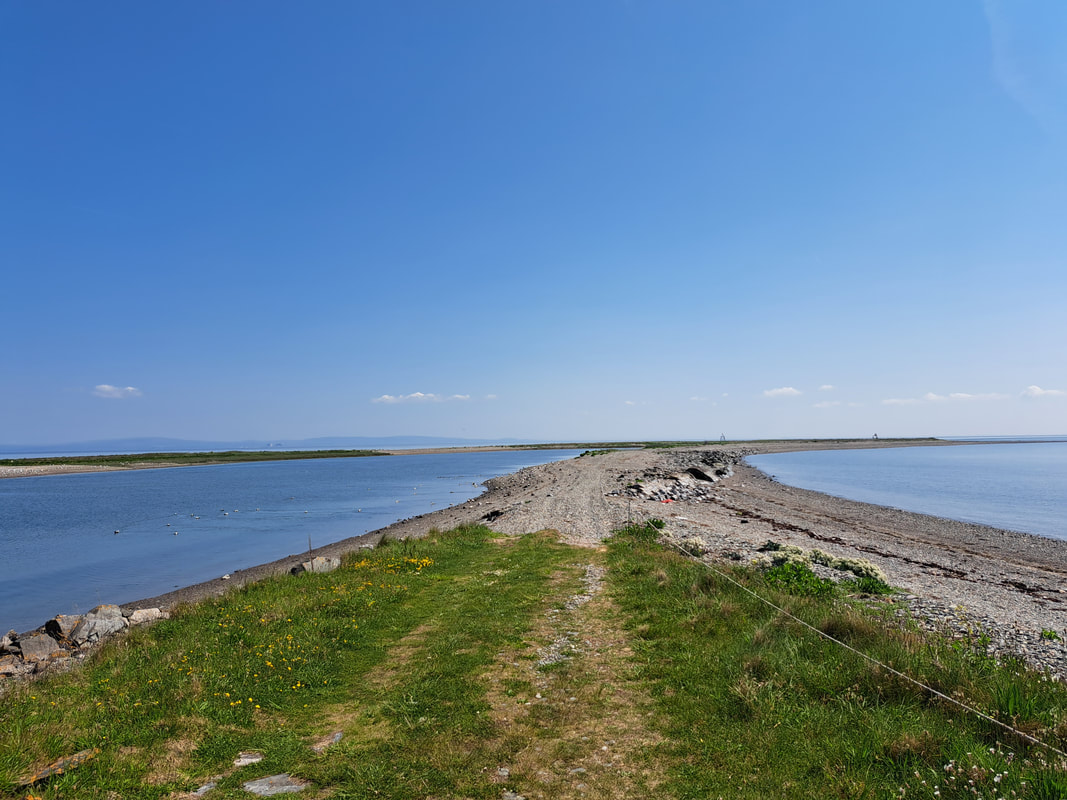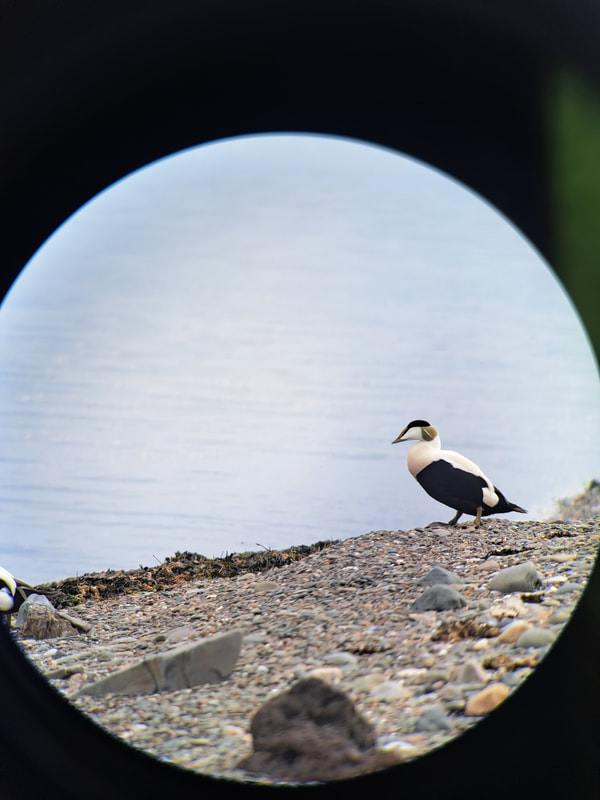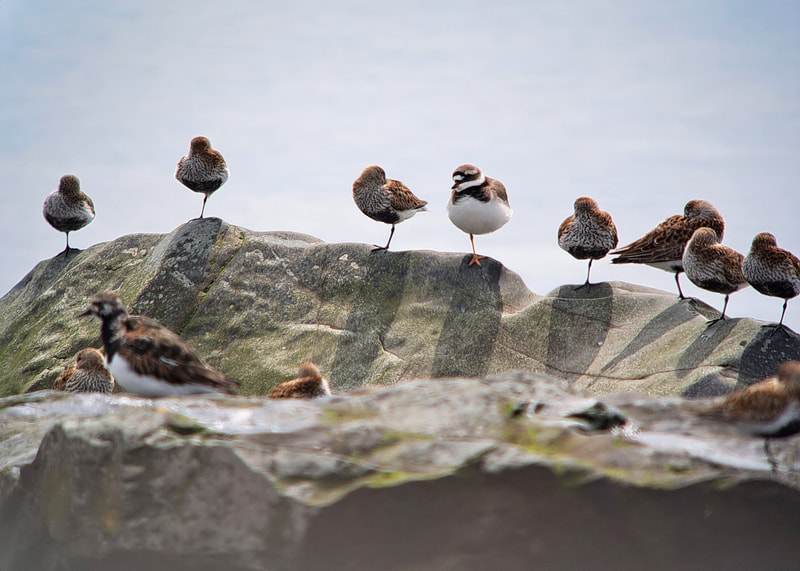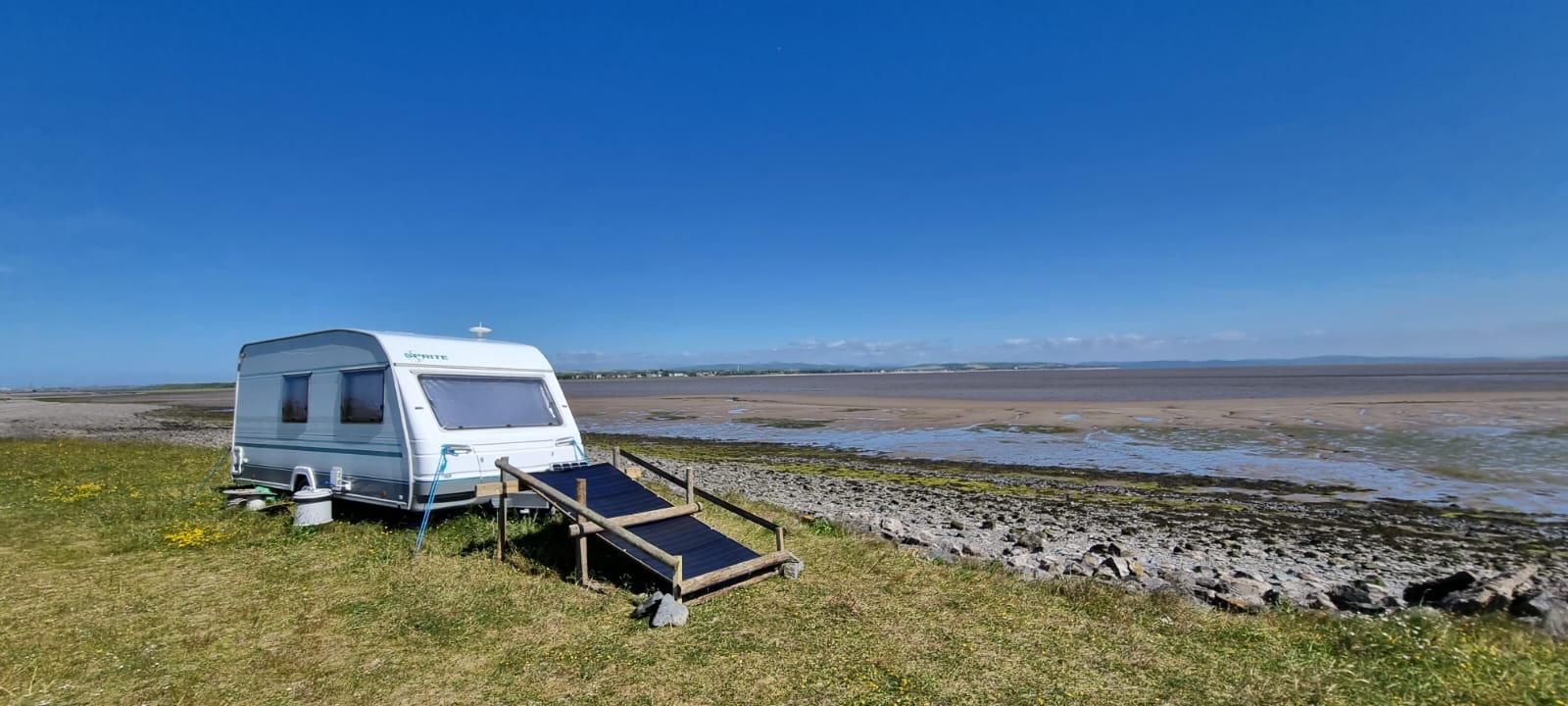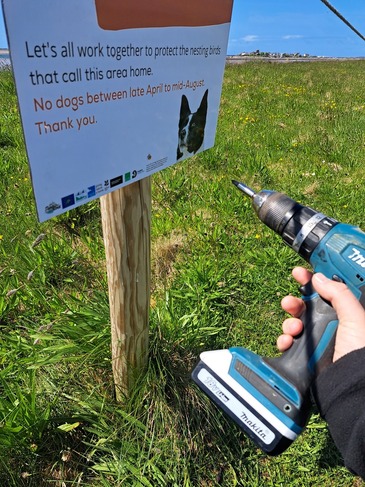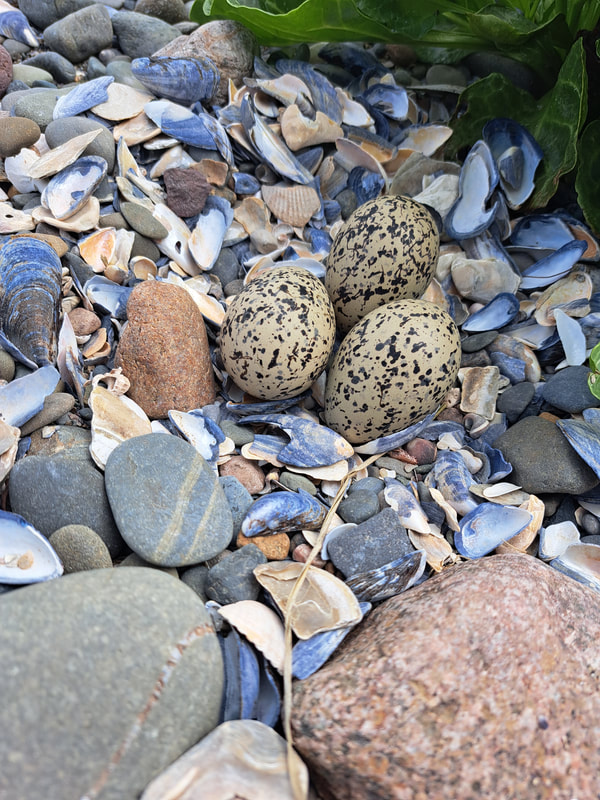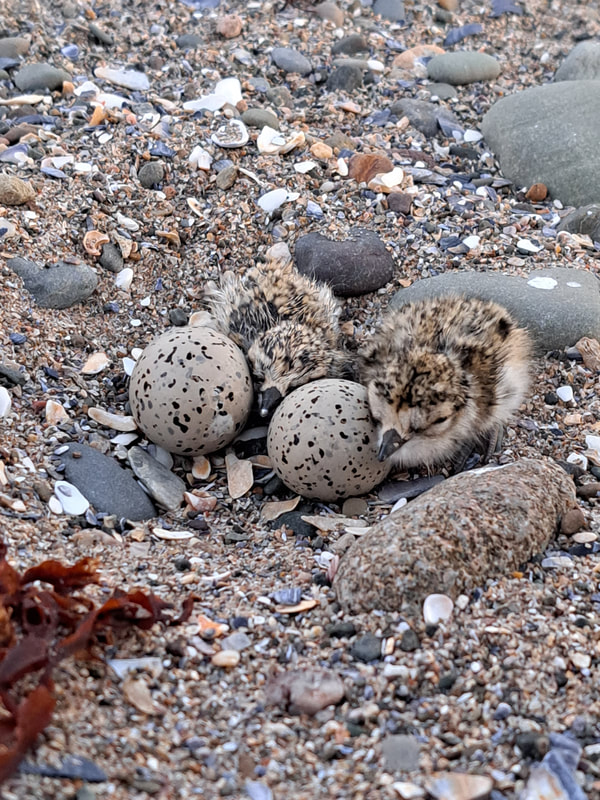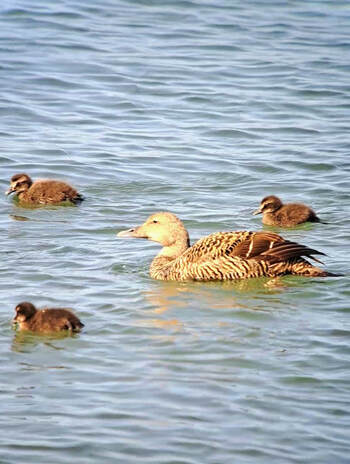|
Blog by Kieren Alexander, RSPB Site Manager for Old Hall Marshes It was a fantastic year on the newly created beach at Horsey Island. For those not familiar with this project, this was the creation of a new beach for little terns and other beach nesting birds to breed on, using 50,000 cubic metres of sand and shingle from the major channel deepening project carried out by Harwich Haven Authority. Along with providing breeding habitat for little terns and other beach nesting birds, the aim of the recharge scheme was also to help reduce erosion of the saltmarsh at Hamford water. This protected habitat, is vital for carbon storage, aiding in the fight against climate change. The project also assists in providing a natural wave break for the wider Hamford Water area, absorbing the energy before the waves reach the mainland and reducing pressure on the surrounding seawalls. Nesting on beaches, Little Terns are highly vulnerable to disturbance and erosion exacerbated by rising sea-levels throughout their breeding grounds. The project at Horsey Island, raises the height of a shingle beach out of the reach of the highest tides and hopefully secures this nesting location for the next 60 years. Below is a little video on how we created this new beach: Now in its 3rd year and approaching its 3rd breeding season, it is time report back on the results from 2023’s breeding season; in total 28 pairs of Little Terns successfully raised 42 chicks during this year’s breeding season at Horsey Island in Essex. Figures indicate that this year has seen the highest number of chicks taking to the skies since 2006. The site has also provided valuable habitat for other species including a Common Gull which fledged one chick this year from Horsey and is a rare occurrence in Essex and is possibly the first to have bred in Essex. This is an incredible result and a real success for all the organisations involved in the management of the beach from Tendring District Council, who warden the site and the wider Hamford water embayment, the landowners and HHA and the Environment Agency who helped fund the work. What has also been fascinating is watching the sand and shingle evolve over the three years, this winter has been a fascinating one for the beach, with a lot of strong north easterlies, the front edge of the beach has taken a lot of energy from the wave action and the higher-than-expected tides. Fascinatingly, in response to this and to maintain its stability beach and to absorb this energy, the beach has lowered and rolled back even further. Now that (hopefully) the strong storms are over, the relatively gentle wave energy should begin to pick up the height of the beach again as the crest of the beach will remain out of the water and shingle and sand will be picked up and forced up the beach. We will continue to monitor the beach both ecologically and geo-morphologically, with one final drone survey this Spring before we move to an annual monitoring drone flight to see how it is evolving over time and continued annual monitoring of the little tern population led by Tendring District Council and with the assistance of the landowners. In case you missed it, here is the link to first part of Horsey Island Recharge Project blog, the second part, the third part and the fourth part. Video credits: Jim Pullen/RSPB
0 Comments
Blog by David Mason, National Trust - Suffolk and Essex Coast Ranger April 2023 was an exciting month for the Northey Island Coastal Adaptation Strategy and the LIFE on the Edge project. After several years of planning and preparation the final parts of the embankment were lowered on April 28th and the tide came into the new starter creek, finally overtopping onto the Eastern fields at high tide on the 4th of May. Hurrah! We have timelapse cameras on site to record progress and these are quite useful in comparing before and after photos. This photo shows the ‘before’ of the pond the water voles were translocated from, with Brent Geese settled in the field. The area on the right is the location of the first managed realignment in England carried out in 1991, which laid the foundation for later realignment projects around the country. This is the same view after the embankment was removed, showing the tide coming over the 1991 realignment. On particularly high tides the incoming water covers the lowered embankment and spills into the pond. Here little egrets and other wading birds can be seen in the shallows. May the 4th be with you. The forces of nature take charge at Northey as the first high tide overtops the new starter creek onto the Eastern field. Saltmarsh plants have already begun growing in the Eastern field, predominantly along the edges of the creek and scrape, whilst birds including lapwing, little egret, redshank and greenshank make use of the new intertidal area Bank Reprofiling The bank in the Northern field has been reprofiled with a shallow back slope to make it more resilient to overtopping by the tide during storm surges. Capped with topsoil from on site this will quickly regenerate and forms part of a new circular walk around the site, open April through to September. A new borrowdyke has been dug out further inland. This drains the field and links to an outlet pipe with flap valve that takes excess water into the saltmarsh. The ditch contains a deeper pond area for freshwater wildlife. The field has been re-fenced and will continue to be used for hay making and grazing which keep the grass in good condition for brent geese, lapwing and curlew to use in the winter. Water vole update- As the landscaping work has finished, the fencing to keep the water voles in their new pond has been removed. It now looks like part of the landscape and the voles are free to roam into the network of freshwater ponds and ditches. Fish survey training National Trust staff undertook fish survey training with Steve from the Institute of Fisheries Management. After laying out fyke nets in the creeks at low tide, we trawled a tidal pool with a seine net while waiting for the tide to rise and bring the fish in to the creeks. The seine net caught a range of small fish including common goby, bass, thin lipped grey mullet, gold grey mullet, stickleback, prawn and shrimp. Larger bass were caught in the fyke net nearest the seaward end of the creek. The surveyed marine life were returned to the creeks and scrapes following identification to continue their journeys around the estuary and further afield. Links to previous blogs about Northey Island Part 1: www.projectlote.life/news/northey-island Part 2: www.projectlote.life/news/ntconservationadaption Part 3: https://www.projectlote.life/news/ntwatervoles Part 4: www.projectlote.life/news/northey-update Blog by David Mason, National Trust - Suffolk and Essex Coast Ranger ‘Working with the grain of nature yields the best chance of maintaining a healthy and beautiful coast for the future, a coast that is great for people and for wildlife.’ – Northey Island Coastal Adaptation Strategy Project Vision The UK government has recognised the importance of the East Atlantic Flyway, a migratory bird route over western parts of Europe including Yorkshire, Lincolnshire, Norfolk, Suffolk, Essex and Kent. In recognition of its vital importance to bird populations and wildlife it has joined the list of seven sites put forward to join the list of World Heritage sites. The area sees huge transient bird populations pass through every year as the seasons change, and the River Blackwater in Essex, including Northey Island, is one of its hotspots. More space created for birds. The overhead powerlines across the island were removed last year and replaced with underground cables. Once the flightline was clear the brent geese that winter here, along with lapwing, curlew and godwit, began using the eastern and southern field, areas of the Island they had previously avoided. The highest number of geese since 2015 (1710) was recorded on the WeBS count, along with the highest count ever of dunlin (3875) roosting at high tide. Following the managed realignment, this area in the eastern field is designed to be underwater at high tide. It will retain water when the tide goes out and will develop as a saline lagoon. The geese enjoyed the shelter of the sea wall over the winter and used all the grassland on the island. North West Wall beneficial use of dredged sediments (BUDS) Further sediment dredged from Maldon harbour has been placed to enhance the saltmarsh in this area as part of an ongoing project. Oystercatchers nested just beyond the placed mud on a patch of gravel. We are hoping other birds may use the new nest boxes placed on top of the cut down power poles left in the eastern field. Water vole update Pond marginal vegetation is well established in the main new pond and is providing food and shelter for the translocated voles. A pair of mallard also nested in the vole enclosure and hatched 10 ducklings. Signs of water voles burrowing in the pond banks and feeding have been found with the characteristic diagonal cut on the small piles of vegetation. Later in the year they will pull these into their burrows as a winter food source. A new extension fence has been installed along a connecting ditch to allow population expansion and accommodate any further voles found during the continuing works. The fencing installed to contain the voles will be removed when the works are finished, and they will have access to all the freshwater bodies on the island. Telling the story of Saltmarsh, Migration and Managed Realignment New interpretation boards have been installed in the hide and on a viewing platform, with a a new bench overlooking the River Blackwater towards Maldon and Heybridge. The three boards illustrate different aspects of the island’s environment. The first board explains the importance of saltmarsh for biodiversity, flood protection and carbon storage and the second highlights the East Atlantic Flyway used by migratory birds. The third board illustrates the work of the LOTE project to realign some of the sea walls to create 10 hectares of new saltmarsh and protect 50-60 hectares of saltmarsh for the next 100 years, predicted to have been lost to the effects of climate change without action. Another new hedge and pond created 276 hedge plants were planted in total and included hawthorn, hazel, wild honeysuckle, spindle, field maple, buckthorn, hornbeam, cherry plum and blackthorn. These species were selected to provide a good variety of fruit, blossom and year-round interest, so will hopefully increase the food sources available for birds and insects on the island. These have been weeded and mulched by the Essex and Suffolk Volunteer Group along with removing old barbed-wire and litter from the saltmarsh. Three new ponds have been created, linked by a connecting ditch, in the north east corner of the island. They have attracted yellow wagtail and mallard. Links to previous blogs about Northey Island
Part 1: www.projectlote.life/news/northey-island Part 2: www.projectlote.life/news/ntconservationadaption Part 3: https://www.projectlote.life/news/ntwatervoles Blog by Dave Blackledge - Site Manager, RSPB Cumbria Coast Reserves RSPB Hodbarrow, on the side of the Duddon Estuary in Cumberland, is the site of an important colony of Sandwich, Little and Common Terns. They breed on land formerly occupied by one of western Europe’s largest iron mines and began nesting there as the mines closed over 50 years ago. Predator fencing and warden protection has seen increasing numbers of seabirds breeding on the island created on limestone slag with vital protected space at a premium. The Life on the Edge project has been helping create more space for our colony to expand. At the start of the project in 2020, we constructed a new island and carried out work to increase the size of the existing one, giving us around 0.75 ha of extra breeding habitat, protected by anti-predator barrier fence. Work has continued this winter to further increase the opportunities for breeding seabirds by creating a third island of 0.25ha. and provide a line of marker buoys along our boundary with the neighbouring caravan park to reduce the incidence of boat disturbance near the islands. The coastal iron mines were enclosed by a seawall at the start of the 20th century to protect works from flooding and thousands of tons of limestone slag from the nearby smelting works were dumped within the wall, providing an ideal substrate for nesting terns when the works were flooded following closure in 1968. Island creation on site therefore centres around lowering, moving and cutting off areas of the slag bank to create disturbance free areas. This increased space has already begun to prove beneficial to a number of species. As terns, Black-headed Gulls and wildfowl began to increase behind the initial predator fence deployed in 2016, Little Terns in particular found it difficult to find space away from other species with their tendency to nest in a more dispersed pattern to other species. The first island created in 2020/21 has attracted most of the 60 or so pairs of common terns to breed creating space for little terns to expand. This season we have a peak of 53 pairs of little terns – a record for the site, and young are beginning to hatch at the time of writing. With HPAI hitting some Sandwich Tern colonies hard, we are delighted to have 596 pairs currently hatching young on site – a little down on recent years, but probably expected with a presumably reduced UK population this year. Creating several islands also has the advantages of reducing the chance of predation – any breach of the predator fence would only allow foxes access to one area of the colony – and separating the colony into areas where interaction and movement will be restricted which may help prevent the spread of HPAI throughout the entire site. Eiders too, have benefitted greatly from the works. With historical averages of around 5 nests, increased breeding space and predator fencing has increased this to 73 pairs, with several large creches seen escaping over the sea wall to the estuary in recent weeks. Along with 2 pairs of Arctic Terns, 12 pairs of Oystercatchers, 9 pairs of Lapwings and 4 pairs of Ringed Plover the busy breeding islands are proving a valuable haven for seabirds along the Cumbrian coast. Previous blogs on RSPB Hodbarrow
Part 1: NEW ISLANDS FOR SEABIRDS AT HODBARROW Part 2: DOING A GOOD 'TERN' Part 3: HODBARROW TERN TRENDS Part 4: 2022 HODBARROW SITE PREPARATIONS Blog by Rebekah Watts, Cumbria Wildlife Trust Foulney Island Warden Why is Foulney important? Foulney Island Nature Reserve is comprised of a shingle spit within Morecambe Bay SPA connected (via manmade causeway) to the mainland. The reserve is home to several wintering bird species such as knot, dunlin and wigeon and is an important breeding location in the spring and summer for shorebirds such little terns, Arctic terns, ringed plovers and oyster catchers as well as other bird species such as pied wagtails, meadow pipits, eiders and skylarks. The terns that choose Foulney as their nesting grounds are protected species and they are in decline. It is so important to offer them a safe place to lay their eggs and raise their chicks as they are easily disturbed by human recreational activities, dogs, aerial and ground predators (such as sparrowhawks and foxes). Their nests are vulnerable as they nest where there are no visual obstructions to allow them to watch for predators but this means that they nest out in the open, making their chicks and eggs susceptible to predation. Their eggs are at risk of being trampled by people, as their camouflage is very successful. Terns nest on shingle and require close access to the sea to feed. That’s what makes Foulney the perfect place for them. Terns return to the same colony to breed in most cases and Arctic tern travel 22,000 miles on their migration. This special little island hosts these incredible birds and it needs to be protected. Breeding Season Preparation Preparation for breeding season on Foulney Island is an intense operation! For this year, the main island was turf stripped to provide extra habitat for shore nesting birds. This new shingle area was fenced off to protect the birds using it to raise their young, from ground predators such as foxes, rats and hedgehogs. Turf stripping involves the removal of the top layer of vegetation and in this case, changing the habitat to shingle. The vegetation was then buried beneath the layer of shingle. This area has been used this season by eiders, ringed plovers and oyster catchers who’s chicks began hatching recently, proving the success of the change in habitat! Skylarks and meadow pipits also benefited from the ground predator protection in this area as they too nested here, inside the fence on the edge of the shingle where vegetation remains. In preparation for the electric fence the vegetation was strimmed. Insulator stakes were knocked into the ground and electric wires passed through the insulators. To prepare the public, signs were put up in the carpark, the causeway and on the island stating that dogs are not allowed and explaining why, and the rope fence to fence off the beach area, where the birds nest, was put up. Lastly, the caravan was put in place. Then it was time to begin surveying! Warden life on Foulney Hi! I’m Bekka, and I’m this year’s seasonal warden on Foulney island nature reserve. This beautiful little island reserve is home to many species of breeding birds over the summer including oystercatchers, ringed plovers, eider ducks and little terns. In addition to the birds, the island is home to and visited by mammals such as grey seals and voles; as well as insects such as butterflies and moths. Sharing an island with such beautiful wildlife is an amazing experience. Being the only person living on an island might seem lonely, but I have plenty of fishermen to chat to, and of course the wildlife! During the season I have been lucky enough to experience finding nests and watching parents lovingly incubate their eggs, and have watched eggs hatch into beautiful chicks. Watching eider females with crèches of up to 30 ducklings swimming across the water and oyster catcher parents leading their chicks across the shingle are sights that will never get old. As the warden, I spend my time monitoring eggs, chicks and adults, checking trail cameras and engaging with and educating the public. Explaining to the pubic the importance of reducing disturbance to nesting birds is an extremely vital part of my job. The natural threat response in nesting shorebirds is triggered by the public and their recreational activities, especially when dogs are involved. When threatened, shorebirds are forced to flee, leaving eggs and chicks vulnerable to predation, and forcing the adult bird to expend energy which should be used in incubation or finding food. In the worst case, an out of control dog can kill shorebirds, which unfortunately occurred on Foulney this season. It is so important that our shorebirds are protected. We all have our part to play! Now that chicks are hatching we are well into the season. Fingers crossed that all goes well here on Foulney island! |
Archives
April 2024
Categories
All
Photo credits: Oystercatcher by Katie Nethercoat (rspb-images.com)
LOTE Logo credits: Saskia Wischnewski |

